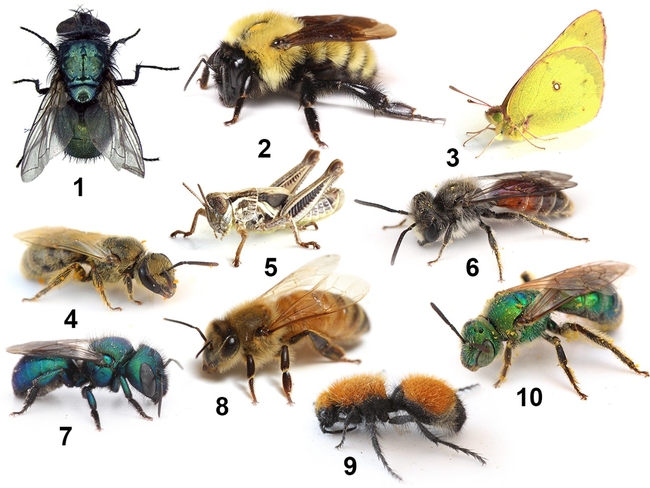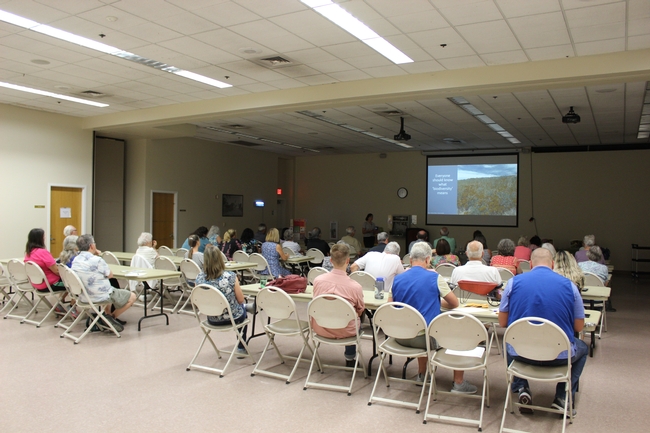- Author: Anne E Schellman
This past week, the UCCE Stanislaus County Master Gardeners held a class about pollinators and the plants they prefer. Speakers from Natural Resources Conservation Service and the Xerces Society helped the audience “meet” many local pollinators found in our county.
Everyone knows about honey bees, but many might not realize there are over 4,000 native bees in California nor be able to recognize them.

Pop Quiz
At the beginning of the class, one speaker showed the image above and asked the audience, “How many bees are in this photo?” Participants shouted out several numbers, but most didn't know the answer. Take a moment to view each insect and count the bees. How many did you find? The answer and insect identities are at the very bottom of the page.
Conservation
Education about pollinators is important so people can learn how to recognize bees and incorporate sustainable gardening practices that help protect them.
Our program plans to create a pollinator collection to have on display at events to help people learn how to recognize these helpful insects. We also plan to have more classes about pollinators throughout the county. In the meantime, you can consult the following pollinator resources.
Native bees and other pollinators
Xerces Society for Invertebrate Conservation
UC Berkeley Urban Bee Lab
Best plants for native bees and pollinators
Visit these sites for lists and information about plants native bees and butterflies prefer that provide pollen and nectar. Many local nurseries and garden centers also carry these plants.
California Native Plant Society
Plant California
Visit a Local Garden!
You can see a local pollinator garden by visiting the La Loma Native Garden located near downtown Modesto.
Answer
Six of the insects are bees!
- Fly
- Bumble bee
- Butterfly
- Sweat bee
- Grasshopper
- Mining bee
- Mason bee
- Honey bee
- Velvet ant (actually a wasp)
- Metallic green sweat bee
Special thanks to the Natural Resources Conservation Council and the Xerces Society for making this class possible. The first photo in this article is based on a study written in Frontiers in Ecology called Public support of bee conservation.


